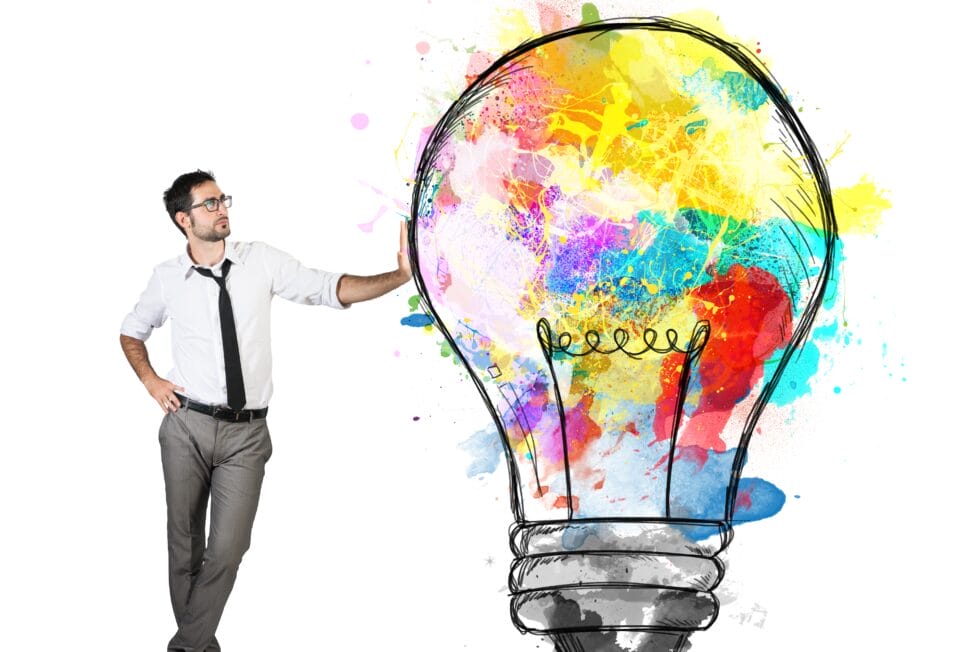Mastering Creativity In The Workplace

LINKS TO CONTENT
ToggleIn today’s fast-paced business world, fostering creativity in the workplace is not just an option, but a necessity. This comprehensive guide delves into the essence of creativity, its roots, and its immense benefits for businesses. We’ll explore practical strategies to recognize, nurture, and harness creativity, transforming your workplace into a hub of innovation.
Creativity is the ability to generate novel and valuable ideas. It’s about seeing things from a new perspective and finding unconventional solutions to problems. In the workplace, creativity isn’t just about artistic expression; it’s a critical skill for problem-solving and innovation.
Creativity is not just an abstract concept but a complex neurological process. Recent advancements in neuroscience have shed light on how different parts of the brain contribute to creative thinking. Understanding these mechanisms can help in fostering creativity in various fields, from education to business.
The frontal lobes, particularly the prefrontal cortex, play a pivotal role in creativity. This region is responsible for a range of higher cognitive functions, including:
The temporal lobes, especially the right temporal lobe, are significant in the creative process. They are involved in:
The parietal lobes play a role in processing and integrating sensory information. They contribute to creativity by:
The limbic system, particularly the amygdala and hippocampus, is involved in the emotional aspects of creativity. It contributes by:
The corpus callosum, a bundle of neural fibres connecting the left and right hemispheres of the brain, also plays a role in creativity. It facilitates:
Neurotransmitters like dopamine are also integral to the creative process. Dopamine is associated with:
Creativity is the result of a complex interplay between different parts of the brain, each contributing a unique function to the creative process. From the frontal lobes’ role in divergent thinking to the limbic system’s emotional input, understanding these neural mechanisms can provide valuable insights into how to nurture and enhance creativity in various domains.
The debate over whether creativity is a product of nature or nurture has long fascinated psychologists, educators, and business leaders. This discussion hinges on whether creativity is an innate talent or a skill that can be cultivated.
Research in the field of psychology provides compelling insights. A study by Dr Oshin Vartanian, published in the journal “Psychology of Aesthetics, Creativity, and the Arts,” suggests that while certain personality traits associated with creativity, such as openness to experience, may have a genetic component, the environment plays a crucial role in nurturing these traits. This study indicates that creativity is not solely an inborn talent but can be significantly influenced by external factors.
Further supporting the nurture aspect, educational research demonstrates that creativity can be developed through specific teaching methods. Dr. Teresa Amabile of Harvard University, in her book “Creativity in Context,” emphasizes the importance of an environment that encourages risk-taking and values creative thinking. Her research found that when individuals feel supported and are given autonomy, their creative output increases.
Moreover, a study by Dr. Bonnie Cramond at the University of Georgia highlights the impact of educational programs focused on creative thinking. These programs, which often include problem-solving tasks and brainstorming sessions, have been shown to enhance students’ creative abilities, suggesting that creativity can indeed be taught and nurtured.
In the business context, companies like Google and Pixar have demonstrated that an environment fostering creativity leads to innovation. Google’s famous ‘20% time’ policy, where employees are encouraged to spend 20% of their time on creative projects, has led to the development of key products like Gmail and AdSense. This approach underlines the belief that creativity thrives in environments that encourage exploration and experimentation.
In conclusion, while there may be a genetic predisposition to certain traits linked with creativity, the consensus in contemporary research is that creativity is largely a nurtured skill. It flourishes in environments that encourage experimentation, support risk-taking, and value diverse perspectives. This understanding is crucial for businesses and educational institutions aiming to foster a culture of innovation and creativity.
Embracing creativity in your business strategy is not just about generating new ideas; it’s about securing a competitive edge in an ever-evolving market. The advantages of fostering creativity are manifold, ranging from innovative product development to enhanced problem-solving capabilities.
Conversely, businesses that fail to embrace creativity may face several disadvantages:
In summary, creativity in the workplace is not just a nice to have; it’s a critical component of success and sustainability. By fostering a culture of innovation and creative problem-solving, businesses can stay ahead of the curve, attract and retain top talent, and maintain a strong position in the market. Conversely, ignoring the importance of creativity can lead to stagnation, inefficiency, and a weakened competitive stance.
Identifying creativity in the workplace is crucial for fostering an innovative and dynamic environment. However, measuring creativity can be challenging due to its subjective and multifaceted nature. Here are some strategies and tools to effectively recognize and measure creativity:
Recognizing and measuring creativity in the workplace requires a combination of observational skills, practical tools, and an organizational culture that values innovative thinking. By effectively identifying and nurturing creativity, businesses can unlock a wealth of potential for growth and innovation.
Creativity in the workplace is not just a skill but a culture that can be cultivated through various practices. Here are some key practices, along with additional ones, to foster creativity:
By integrating these practices, businesses can create an ecosystem that not only breeds creativity in the workplace but also supports and nurtures it. This approach leads to a more dynamic, innovative, and ultimately successful business environment.
Creating a culture of creativity in the workplace is about more than just encouraging new ideas. By embracing these strategies, businesses can unlock their full creative potential, leading to sustained growth and success.
Remember, creativity is not a luxury; it’s a business imperative. By fostering a creative workplace, you’re not just innovating; you’re future-proofing your business.
